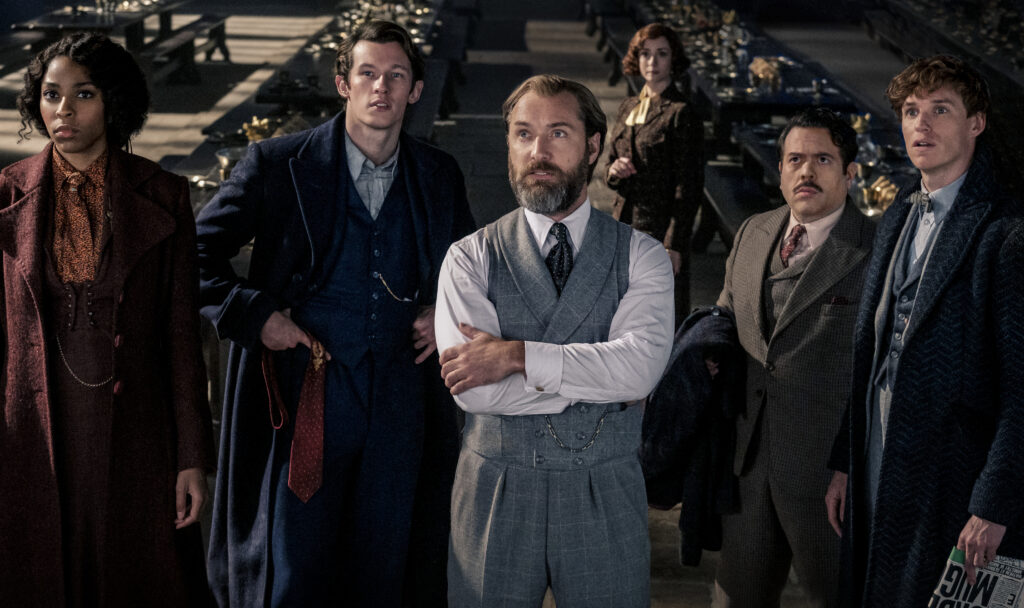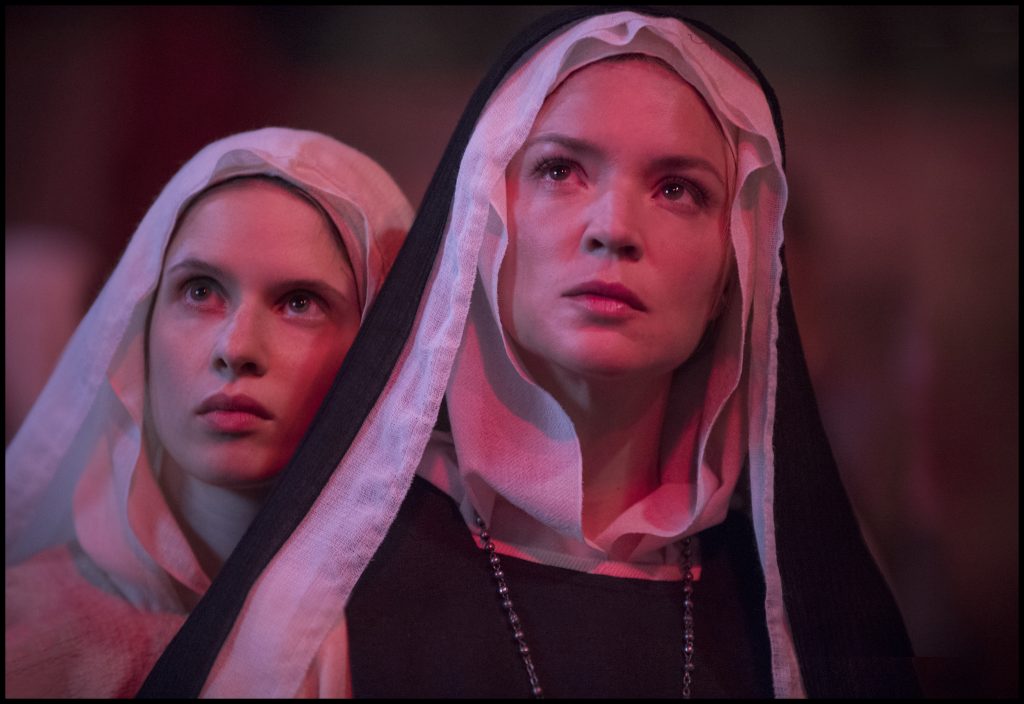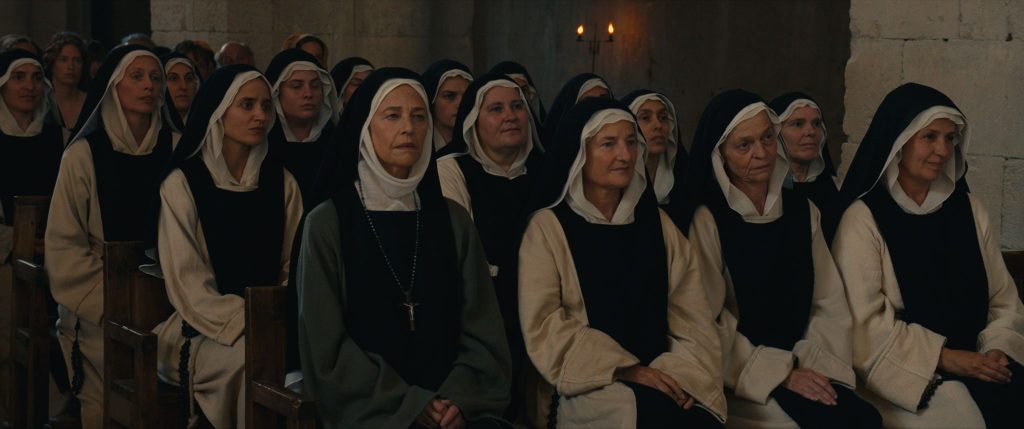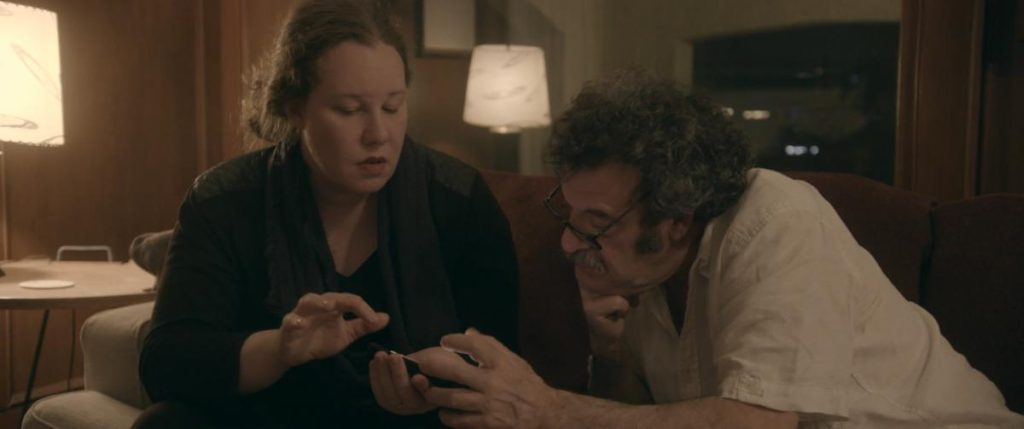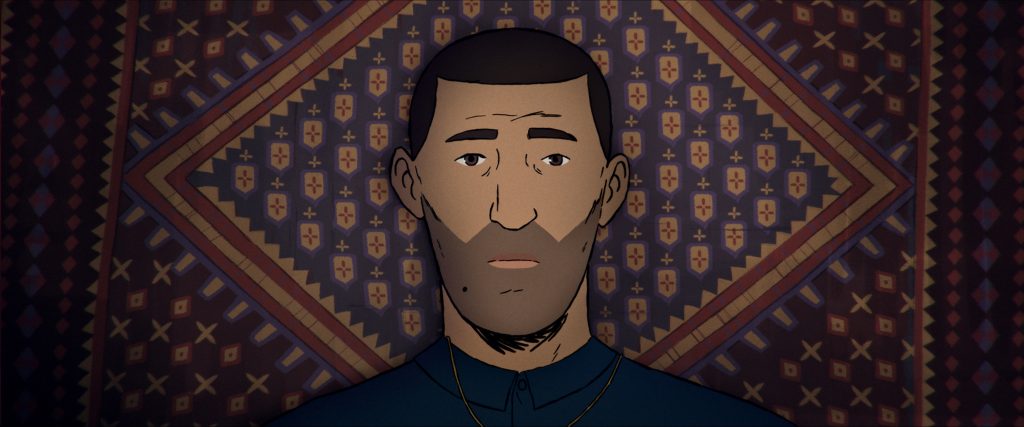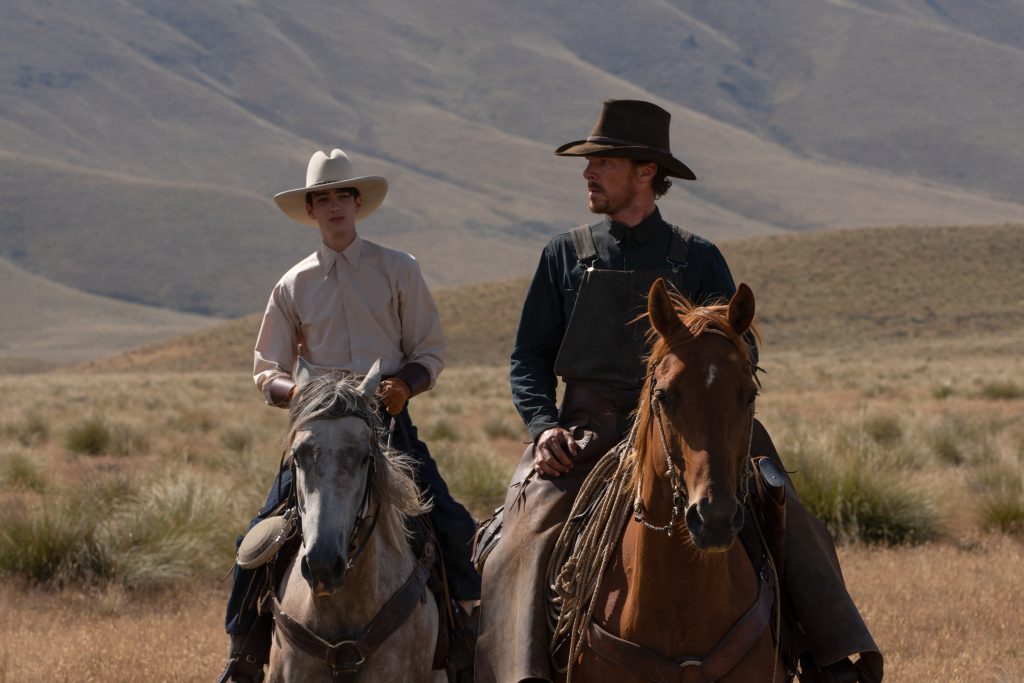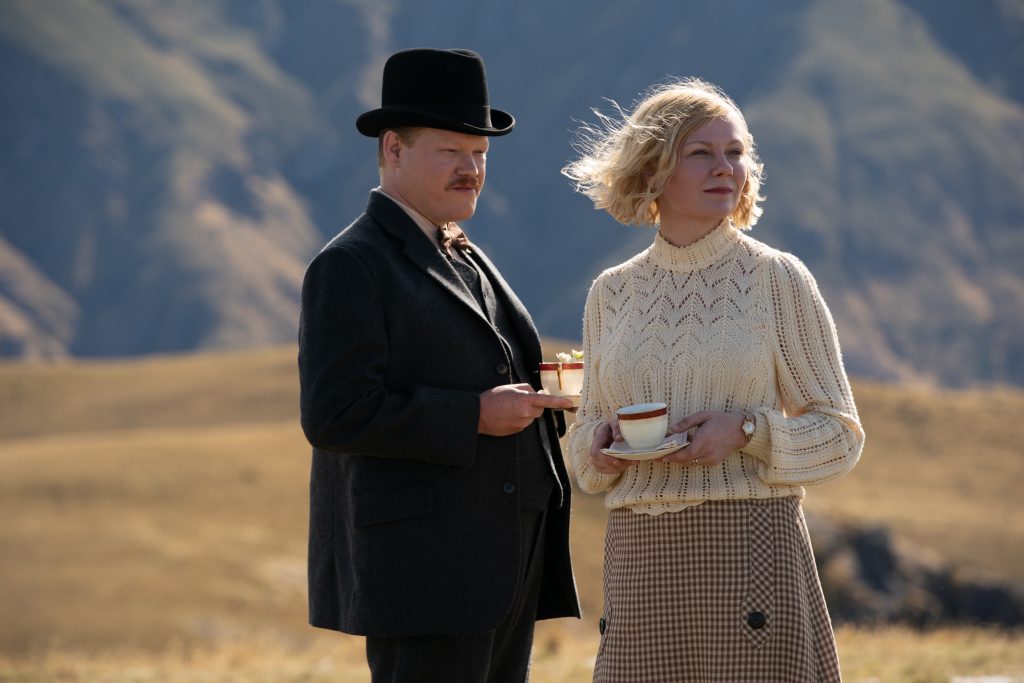April 25, 2022
by Carla Hay
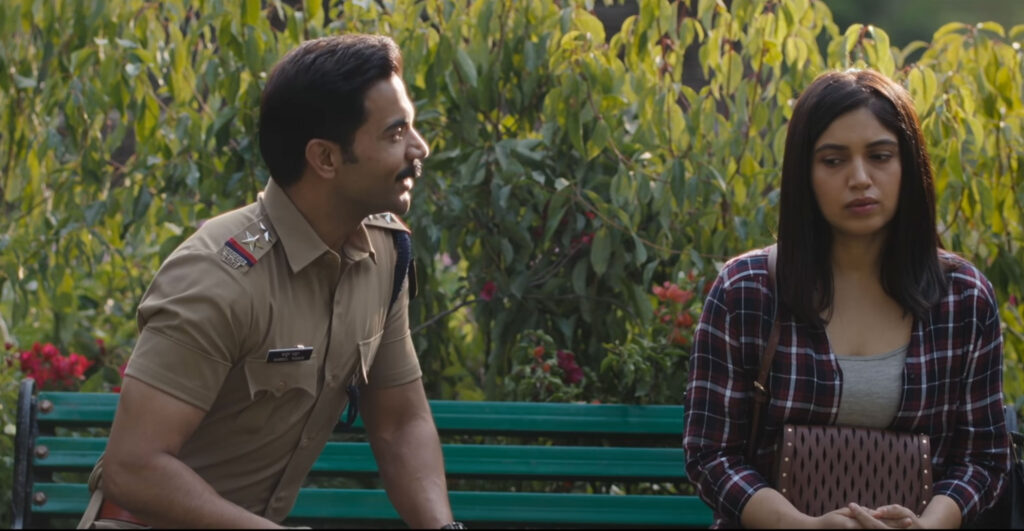
Directed by Harshavardhan Kulkarni
Hindi with subtitles
Culture Representation: Taking place in an unnamed city in India, the comedy/drama film “Badhaai Do” features an all-Asian cast of characters representing the working-class and middle-class.
Culture Clash: A gay man and a lesbian, who are both in the closet about their sexualities, decide to get married to each other to throw off suspicion from their families, but complications ensue when they both meet real love partners.
Culture Audience: “Badhaai Do” will appeal primarily to people who are interested in stories of how LGBTQ people live in India, where homophobia is encouraged and practiced by much of society.

“Badhaai Do” is a rare LGBTQ Bollywood film that achieves a balancing act of comedy and drama. It’s about the damage caused by homophobia and the courage it takes to live authentically. The main cast members’ charismatic performances make this movie a winner. It’s a story that’s both sobering and heartwarming.
Directed by Harshavardhan Kulkarnia, “Badhaai Do” (which translates to “Felicitations Due” in English) is a witty, often-sarcastic and engaging film that has a brisk pace that doesn’t make it seem like the movie is really two hours and 27 minutes long, even though it is. Kulkarnia co-wrote the “Badhaai Do” screenplay with Suman Adhikary and Akshat Ghildial. There are some parts of the movie that have a heightened tone of a screwball comedy, but the movie does not veer too far off from reality, except for the expected Bollywood musical interludes where the characters begin singing and dancing to their dialogue.
In “Badhaai Do” (which takes place in an unnamed city in India), a gay man and a lesbian get married to each other, because they’re hiding their true sexualities from almost everyone they know, including their families who have been pressuring them to have heterosexual marriages. The two people in this closeted couple are police officer Shardul Thakur (played by Rajkummar Rao) and physical education teacher Suman “Sumi” Singh (played by Bhumi Pednekar), who are both in their early 30s.
Shardul comes from a large family of women, including his unnamed widowed mother (played by Sheeba Chaddha), who are all pressuring him to get married to a woman. As expected, Shardul’s female relatives have also been playing matchmaker by trying to set him up with women whom they think could be a suitable wife for Shardul. He pretends that he’s interested, even though he knows that he’s not sexually attracted to women.
Sumi was once engaged to a man, who died six years ago in a tragic accident. She hasn’t had a serious boyfriend since then, but her conservative parents Prem Singh (played by Nitesh Pandey) and his wife Mrs. Singh (played by Loveleen Mishra) are expressing concerns to Sumi that she hasn’t moved on and found someone else to marry. Sumi and her brother Naman Singh (played by Vyom Yadav), who is 10 years younger than she is, still live with their parents. Naman has a bratty and sexist attitude about Sumi being an unmarried woman at her age, and he often makes snide comments to her about her marital status.
Even though Sumi can’t bring home any women she dates, Sumi still tries to find a love partner. She has been talking to someone on a lesbian dating app. But when she meets this possible love interest in person, she finds out that it’s really a young man, who tries to get Sumi to date him.
Sumi refuses to date him, so he starts harassing her and threatens to tell her family and friends that she’s a lesbian. Sumi is a feisty person who’s not afraid to stand up for herself, so she goes to the police to report this harassment. It’s how Sumi ends up meeting Shardul, who takes the report. It’s also how he finds out that Sumi is a lesbian. Shardul gets rid of the harasser by smacking him around—not bad enough where medical treatment is needed, but enough to scare away the harasser.
At work, Shardul is so fearful about revealing that he’s gay, he overcompensates by saying homophobic things. For example, early in the movie, Shardul and a police co-worker are in a local park when they catch two men who are about to be in a compromising sexual situation. Shardul and his colleague interrupt this tryst before things go further and tell the men to leave. Shardul makes a big show of expressing disgust with gay people, as if to say, “I’m not one of them!”
It just so happens that Sumi is nearby in the park at the same time. Shardul sees her sitting on a park bench by herself and strikes up a conversation with her. They end up talking about how their families are pressuring them to get married. And so, Shardul then confesses to Sumi that he’s gay and in the closet.
Shardul suggests to Sumi that they pretend to date each other and then get married, in order to “get our families off of our backs.” Shardul also says that he and Sumi can live like roommates. And because Shardul is a police officer, he tells Sumi that he can probably protect her better than most other people could.
Sumi is skeptical about this idea at first, but she eventually agrees. Shardul and Sumi’s short “courtship” soon turns to marriage. The movie’s wedding predictably has the most elaborate musical scenes in “Badhaai Do.”
But there are some big problems to living this lie of a phony marriage. Around the time that Sumi and Shardul concoct their fake romance, Sumi meets and begins dating Rimjhim Jongkey (played by Chum Darang), a confident woman who works as a hospital employee who processes lab samples. (The movie has some scatalogical comedy because Rimjhim deals with stool samples. Sumi meets Rimjihm because Sumi dropped of her own stool sample at the hospital.)
Sumi and Rimjhim have an instant mutual attraction, they begin dating, and they end up falling in love with each other. Rimjhim knows almost from the beginning that Sumi is pretending to be in a romance with Shardul. Rimjhim doesn’t really approve of this deception, but she goes along with it because she understands what’s at stake: Sumi’s family could disown Sumi if they found out that she’s a lesbian. (None of this spoiler information, because it’s in the movie’s trailer.)
Rimjhim lives openly as a lesbian/queer woman because she says that she doesn’t have any family members living in India. If she did, Rimjhim says that she would probably have to hide her true sexuality too. After Shardul and Sumi get married and move in together, Rimjhim spends so much time in their apartment, she essentially starts living there too.
If anyone notices that Rimjhim has spent the night at the apartment, Shardul tells people he knows that Rimjhim is Sumi’s cousin, while Sumi tells people she knows that Rimjhim is Shardul’s cousin. It’s a flimsy lie that’s bound to unravel if people who know Shardul and Sumi start talking to each other about Rimjhim.
As for Shardul’s real love life, his is more complicated than Sumi’s. When Shardul and Sumi met, he was already in a long-distance romance with a man who’s about 10 years younger: a graduate business student named Kabir (played by Deepak Aurora), who might not have the same feelings for Shardul that Shardul has for him. Kabir meets up with Shardul (at Shardul’s invitation) at the resort where Shardul and Sumi are having their “honeymoon.”
Soap-opera-styled drama ensues, as well as some hilarity when Shardul and Sumi desperately try to fool their family through staged photos that Shardul and Sumi are on a romantic vacation together. More backstory about Shardul’s love life is revealed which somewhat explains the patterns of mistakes he makes in his relationships. And then, things get more complicated when Shardul meets and has a mutual attraction to an attorney named Guru Narayan (played by Gulshan Devaiah), who is an obvious better match for Shardul than Kabir.
During this fake marriage, Shardul and Sumi sometimes clash with each other over certain issues. One of those issues is about parenting. Sumi says she has always wanted to be a mother, and she’s thinking about adopting a child. Shardul is adamant that he’s not ready to become a parent. Sumi accuses Shardul of being selfish and immature. Shardul accuses Sumi of being demanding and unreasonable.
They also bring some emotional baggage to the relationship. Although Sumi wasn’t romantically in love with her fiancé who died, she loved him as a friend. And so, Sumi is still dealing with grief over his death. Shardul has some unresolved issues with how his first big love affair ended and why it’s affected his fear to live openly as a gay man.
The movie’s plot has a few twists and turns, some of which are more expected than others. Rao and Pednekar give admirable performances that will make audiences root for Sumi and Shardul in the highs and lows of their unconventional relationship. (The realistic homophobia shown in the movie is heartbreaking, but it’s balanced out with moments of LGBTQ pride and self-confidence.) “Badhaai Do” shows in exemplary ways that no matter what people’s sexualities are, everyone deserves a chance to be happy, wherever they can find their personal joy that doesn’t hurt anyone else.
Zee Studios released “Badhaai Do” in select U.S. cinemas on February 11, 2022, the same date that the movie was released in several other countries, including India, Australia, Singapore, France and Ireland. “Badhaai Do” is also available on Netflix.

